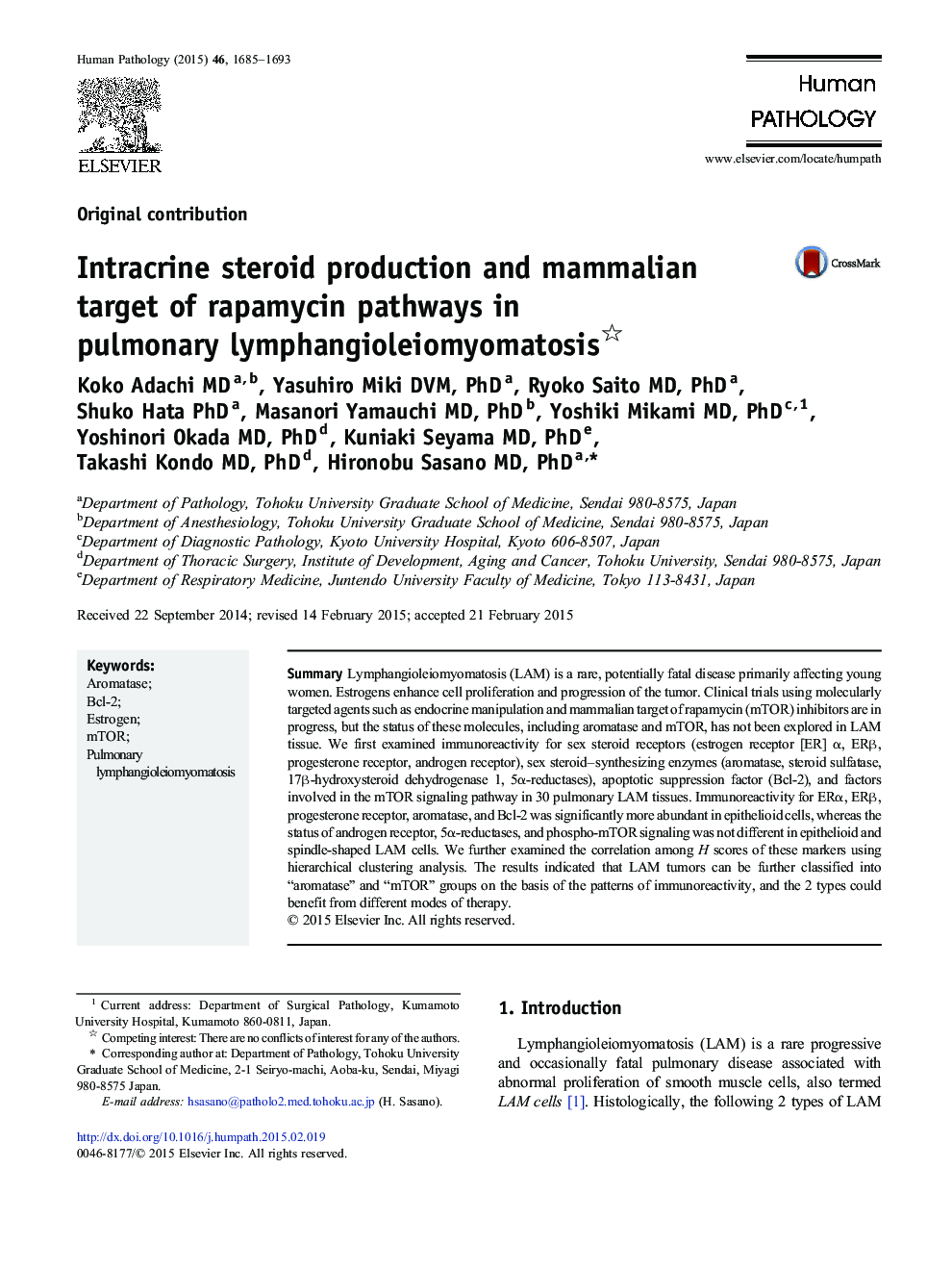| کد مقاله | کد نشریه | سال انتشار | مقاله انگلیسی | نسخه تمام متن |
|---|---|---|---|---|
| 4132873 | 1271397 | 2015 | 9 صفحه PDF | دانلود رایگان |
SummaryLymphangioleiomyomatosis (LAM) is a rare, potentially fatal disease primarily affecting young women. Estrogens enhance cell proliferation and progression of the tumor. Clinical trials using molecularly targeted agents such as endocrine manipulation and mammalian target of rapamycin (mTOR) inhibitors are in progress, but the status of these molecules, including aromatase and mTOR, has not been explored in LAM tissue. We first examined immunoreactivity for sex steroid receptors (estrogen receptor [ER] α, ERβ, progesterone receptor, androgen receptor), sex steroid–synthesizing enzymes (aromatase, steroid sulfatase, 17β-hydroxysteroid dehydrogenase 1, 5α-reductases), apoptotic suppression factor (Bcl-2), and factors involved in the mTOR signaling pathway in 30 pulmonary LAM tissues. Immunoreactivity for ERα, ERβ, progesterone receptor, aromatase, and Bcl-2 was significantly more abundant in epithelioid cells, whereas the status of androgen receptor, 5α-reductases, and phospho-mTOR signaling was not different in epithelioid and spindle-shaped LAM cells. We further examined the correlation among H scores of these markers using hierarchical clustering analysis. The results indicated that LAM tumors can be further classified into “aromatase” and “mTOR” groups on the basis of the patterns of immunoreactivity, and the 2 types could benefit from different modes of therapy.
Journal: Human Pathology - Volume 46, Issue 11, November 2015, Pages 1685–1693
